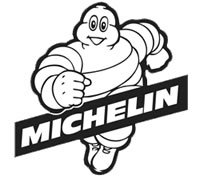Michelin Reminds Consumers of Important Tire Safety Tips During National Tire Safety Week
 |
GREENVILLE, S.C., June 5, 2009: As part of the annual Rubber Manufacturers Association's (RMA) National Tire Safety Week from June 7-13, 2009, Michelin is reminding consumers that proper tire maintenance is critical to the performance and safety of their vehicles. In addition, choosing the right tire with a balance of safety, performance and fuel-efficiency can provide confidence and peace of mind while driving.
The MICHELIN(R) Energy(TM) Saver A/S tire, on-sale this week, is a concrete example of a tire that offers exceptional levels of fuel-efficiency*, without sacrificing other key performances and gives consumers an ideal balance. It is one of the first all-season tires in the industry to combine low levels of rolling resistance with superior levels of wet braking and all-season performance.
The Energy Saver All-Season is now available in four sizes that include popular mainstream and hybrid vehicles. The sizes are: P215/60R16; P195/65R15; P195/60R15 and P185/65R15.
Tire Safety Tips:
The following tire care tips will help to maintain a safe driving experience:
Check Tire Pressure
Proper inflation is essential for the performance and longevity of the tire. Under-inflated tires will make your tire wear unevenly and negatively impact performance. In addition, keeping your tire pressure at the recommended level can boost fuel efficiency by one mile per gallon. Before any long trip and once a month, properly check the pressure of each tire with a tire gauge. The car maker's recommended tire pressure is on the tire placard and can be found near the driver's door jamb, on the glove compartment door or in the owner's manual. Do not inflate tires to the maximum pressure molded onto the tire's sidewall, with the exception of mini-spares.
Rotate Tires Regularly
Regular rotation helps extend the life of your tires, saving time and money in the long run. For rotation, each tire and wheel is removed from your vehicle and moved to a different position. This ensures that all of the tires wear evenly and last longer. If no period is specified in your vehicle owners manual, tires should be rotated every 6,000 to 8,000 miles. If you have a full-size spare, it should be included in the rotation process.
Keep Proper Vehicle Alignment
Alignment generally refers to the adjustment of a vehicle's front and rear suspension parts. Proper alignment helps ensure that your vehicle handles correctly and will help increase the life and performance of your tires.
Keep Tires Balanced
Balancing compensates for the weight of the tire and wheel assembly after the tire is mounted. A wheel is out of balance when one area is heavier or lighter than the rest. This can cause uneven tread wear and vibration, plus increase the stress on the front-end system, causing them to wear prematurely.
Check Tire Tread Depth and Replace Worn Tires
In most states, the minimum legal tread depth is 2/32 of an inch. If you place a penny with the top of the head facing down into your tires' shallowest groove and you can see the top of Abraham Lincoln's head, it's time to replace your tires.
About National Tire Safety Week:
National Tire Safety Week is an initiative backed by the Rubber Manufacturers Association (RMA) and its members that aims to educate consumers nationwide about essential tire safety maintenance practices. In its eighth year, the annual event is part of the "Be Tire Smart - Play Your PART" program, a year-round effort designed to help drivers learn the simple steps they can take to ensure that their tires are in good working condition.


